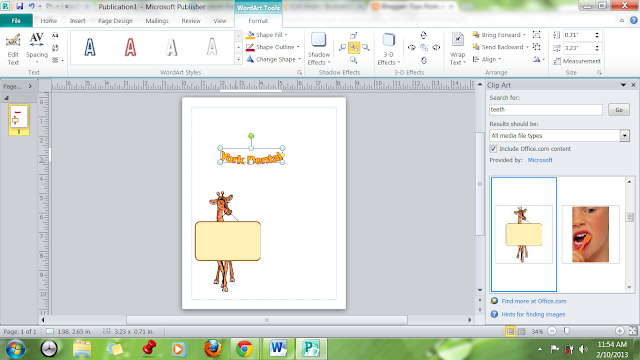1. Open a blank Publisher document.
2. I went to INSERT-WORDART and chose something I liked for the words in my logo, changing the line and fill colors. I then went to INSERT-CLIPART and chose a piece of clipart I liked. Now we will put these together.
3. Drag your two items together so we can make the two work as one. Once you place one item on the other, you may have to play with your send backward, bring forward, as shown below on the right side of the screen, to make them work as you want (my York Dental was originally behind the giraffe and was not showing, so I clicked the giraffe and clicked the SEND BACKWARD button).
4. Now let's combine them as one by taking your mouse (hold down the left mouse key and drag the dotted marquee around the items) and surrounding the two items. It will resemble the photo below as you draw around it before you let off the left mouse key.
5. Once you let off the mouse, it will look like the photo below. Both items should now be selected. Notice how both have sizing handles shown indicating they are both active.
6. Right-mouse click on the two and click GROUP.
7. Now when you move your picture around, the two items will move as one. Right-click your new clipart and click SAVE AS PICTURE. Save as whatever you wish. Now you can insert your picture into a Word file, Publisher file, or use it in any way that you use it as any clip art file. Try inserting this file into a Word document by clicking INSERT-FILE once you open Word. If it works, you are ready to place the item in the dropbox.






















